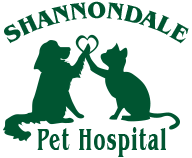Educational Articles
-
Plaque forms on teeth shortly after eating and within 24 hours begins to harden, eventually turning into tartar. Tartar serves as a place for bacteria to grow, leading to gingivitis. As gingivitis worsens, periodontal disease develops, which includes inflammation, pain, and tooth loss. Prevention of plaque and tartar build-up is key. Use VOHC-accepted food and/or water additives, wipe or brush your dog's teeth daily, and have your veterinarian perform regular dental cleanings.
-
Good hygiene takes practice, but starting early will make keeping your pup clean easier for his entire life. You can start some of these jobs shortly after your puppy arrives home. Be sure to keep a calm voice and use food rewards as positive conditioning to make it a positive experience.
-
The American Animal Hospital Association and American Veterinary Medical Association have established guidelines to standardize preventive health care for dogs, helping them to live longer, healthier lives. This handout provides an overview of the recommendations within these guidelines and why they are so important.
-
Anesthesia-free dentistry is commonly offered at pet stores and grooming facilities. It is more limited than veterinary dentistry, and often a higher-stress option with more potential for injury from sharp instruments. Dental cleanings should only be performed while your pet is under anesthesia. Your veterinarian will customize your pet's anesthetic plan for your pet's overall health.
-
Many pets are sensitive to being restrained for grooming. With slow progress and positive rewards, your pet can learn to accept or even enjoy having their teeth cleaned.
-
Teething in puppies lasts from about 3 to 6 weeks of age and again from 12 to 24 weeks of age. Safe chew toys are an important source of energy release, but if puppies are not stimulated sufficiently, or supervised carefully, they will chew elsewhere. Occasionally, retained baby teeth or other dental abnormalities can occur that need to be addressed by your veterinarian. It is important to get your puppy used to having their mouth manipulated for exams and teeth brushing.
-
Dental X-rays in dogs are similar to those taken in humans. In many cases, intraoral (within the mouth) dental X-rays are necessary to identify and treat dental problems in your dog. Nearly two-thirds of each tooth is located under the gum line. Your dog will need to be anesthetized to accurately place the X-ray sensor and perform a thorough oral assessment, treatment, and prevention procedures.
-
Tooth resorption in dogs is a painful condition with no known cause. It is categorized into two types with subcategories of each: internal or external. Tooth resorption is usually only visible on intraoral radiographs. Although the premolars of the lower jaw are most affected, lesions can be found affecting any tooth. Signs and treatment are discussed.
-
A tooth root abscess develops when bacteria enter the exposed root canal of the tooth. The abscess may leak directly into the oral cavity or may leak out onto the skin. A tooth root abscess is painful and must be treated as soon as possible. Signs and diagnosis are discussed. Treatment options include root canal therapy or extraction.
-
Dogs can have misalignment of the teeth much like people. In people, orthodontic care can be used to perfect a pleasing smile or create a functional bite. In dogs, the goal is to make the mouth functional and pain free. Often this involves moving teeth, reducing the height of teeth, or extracting teeth.


